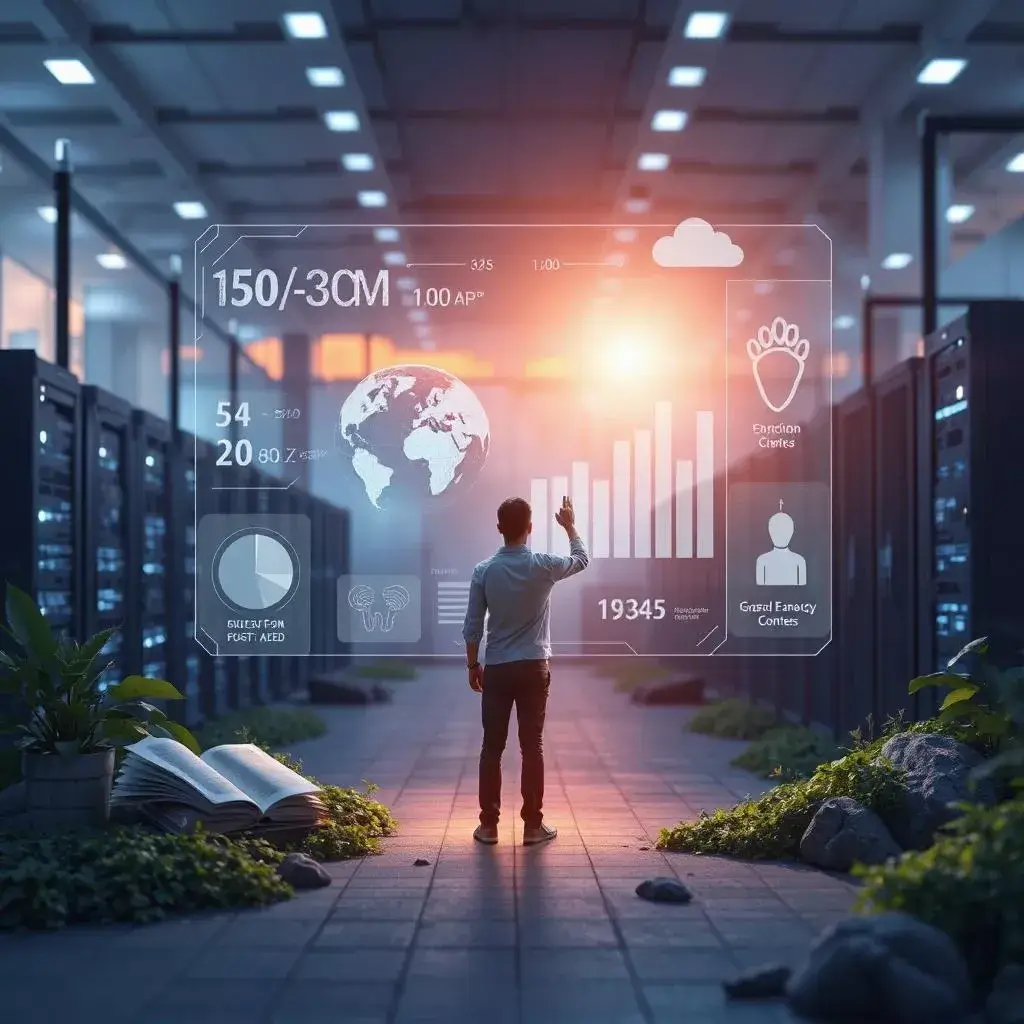1. Introduction
Digital literacy plays a crucial role in reducing energy consumption and carbon footprints in the modern world. As more people use the internet, the way they interact with digital devices and services directly impacts energy efficiency and sustainability.
This article explores how improving digital literacy can help individuals and businesses minimize their environmental impact while benefiting from smarter energy use.
2. Understanding Digital Literacy and Its Environmental Impact
Definition of Digital Literacy: The ability to use digital devices, applications, and services effectively.
The Role of Digital Consumption: Increased screen time and internet usage contribute to carbon emissions.
Energy Use of Data Centers: The internet relies on vast amounts of electricity to store and transfer data.
Carbon Footprint of Devices: Manufacturing, using, and disposing of digital devices affects the environment.
How Awareness Helps: Understanding these impacts allows users to adopt eco-friendly digital habits.
3. Reducing Energy Consumption Through Smart Device Use
Efficient Device Settings: Lower brightness, enable power-saving mode, and schedule auto-sleep.
Unplugging and Power Strips: Turn off unused devices to prevent phantom energy loss.
Using Energy-Efficient Gadgets: Invest in laptops and phones with low energy consumption.
Optimizing Charging Habits: Avoid overcharging and use energy-efficient chargers.
Reducing Background Apps: Closing unnecessary apps reduces processing power and battery drain.
4. Green Internet Browsing Habits
Use of Eco-Friendly Search Engines: Search engines like Ecosia plant trees with ad revenue.
Lowering Video Streaming Resolution: Streaming at 480p instead of 4K reduces energy use.
Blocking Autoplay Videos: Saves data and lowers server processing energy.
Reducing Cloud Storage Load: Deleting unnecessary files reduces data center power consumption.
Using Dark Mode: Reduces screen energy use on OLED and AMOLED displays.
5. Choosing Green Web Hosting and Cloud Services
Why Green Hosting Matters: Traditional servers consume high energy, while green hosting relies on renewable energy.
Top Green Hosting Providers: Companies like GreenGeeks, Kualo, and A2 Hosting use eco-friendly energy.
Cloud vs. Local Storage: Cloud storage powered by renewable energy is more sustainable than personal servers.
Efficient File Management: Compressing files and reducing duplicate data saves server power.
Carbon Offsetting Programs: Some hosting companies invest in environmental projects to neutralize emissions.
6. Sustainable Online Communication Practices
Reducing Unnecessary Emails: Spam and excessive emails increase data center loads.
Eco-Friendly Video Conferencing: Turning off video when unnecessary conserves bandwidth and power.
Text-Based Messaging Over Video Calls: Uses less energy for digital communication.
Limiting Email Attachments: Compressing and using cloud links instead of large files saves storage energy.
Optimizing Remote Work Tools: Choosing low-energy platforms reduces environmental impact.
7. Mindful E-Waste Disposal and Recycling
Understanding E-Waste: Discarded digital devices contribute to toxic waste.
Proper Recycling Methods: Use certified recycling programs to dispose of old gadgets.
Refurbishing and Reusing: Donating or upgrading old devices extends their lifespan.
Reducing Unnecessary Upgrades: Avoid buying new devices frequently to reduce e-waste.
Buying Second-Hand Electronics: Purchasing refurbished gadgets lowers manufacturing energy use.
8. Promoting Digital Minimalism for Sustainability
Limiting Unnecessary Screen Time: Reduces overall energy use.
Decluttering Digital Files: Less cloud storage usage means lower server energy.
Reducing Social Media Overuse: Lowering scrolling time conserves internet bandwidth.
Using Offline Features: Reading offline and downloading content conserves streaming energy.
Scheduled Device-Free Hours: Reduces daily electricity consumption.
9. The Role of Businesses in Encouraging Digital Literacy for Sustainability
Training Employees on Green Tech Use: Educating staff about energy-efficient practices.
Implementing Cloud-Based Solutions: Reducing office electricity and device needs.
Using Digital Workflows Over Paper: Reduces printing and paper waste.
Encouraging Remote Work with Green Policies: Reduces commuting-related emissions.
Partnering with Sustainable Tech Providers: Supporting companies that prioritize eco-friendly operations.
10. The Impact of Digital Education on Sustainable Practices
Teaching Students About Digital Sustainability: Schools can integrate eco-conscious tech use into curriculums.
Encouraging Smart Online Research: Promoting responsible internet consumption.
Sustainable Coding Practices: Developers can create software with minimal energy usage.
Virtual Learning Over Physical Textbooks: Reducing printing waste through digital resources.
Online Collaboration Instead of Travel: Encouraging virtual meetings reduces transportation emissions.
11. Comparison of High-Impact and Low-Impact Digital Habits
| Digital Habit | High Carbon Impact | Low Carbon Impact |
| Video Streaming | Watching in 4K | Watching in SD or 480p |
| Cloud Storage | Keeping unused files | Regularly cleaning files |
| Email Usage | Sending heavy attachments | Compressing files, using cloud links |
| Device Charging | Overcharging devices | Unplugging when full |
| Social Media | Constant browsing | Limited, purposeful use |
12. How AI and Automation Can Support Sustainability
Energy-Efficient AI Systems: Using low-power algorithms for processing.
Smart Device Optimization: AI helps reduce energy waste in digital devices.
Automated Cloud Storage Management: AI clears redundant data automatically.
Efficient Server Cooling Methods: AI can optimize cooling systems for lower power use.
Smart Digital Assistants: AI can help manage energy-efficient digital habits.
13. Future Innovations in Digital Sustainability
Carbon-Neutral Data Centers: Expanding renewable-powered internet infrastructure.
Eco-Friendly AI Development: Making AI training processes less power-intensive.
Advancements in Energy-Efficient Computing: Creating devices that use less electricity.
Smarter Digital Recycling Programs: AI-powered sorting for e-waste recycling.
Global Policies for Green Internet Usage: Governments enforcing sustainability measures in tech industries.
14. Conclusion
Digital literacy is essential in reducing carbon footprints and promoting sustainable internet use. By making small adjustments to daily digital habits, individuals and businesses can contribute to a greener, more energy-efficient world. Understanding and implementing eco-friendly digital practices is key to minimizing environmental impact in the digital age.
Disclaimers
Carbon footprint reduction varies based on individual digital usage.
Some green hosting services may have availability limitations in certain regions.
The effectiveness of energy-saving device settings depends on device models and brands.
Recycling policies differ by country; users should verify local regulations.
The impact of digital habits on energy use is an estimate and may differ by internet service providers.
Author: Dipika Kumari
Publication Date: 27-03-2025
Email: [email protected]
